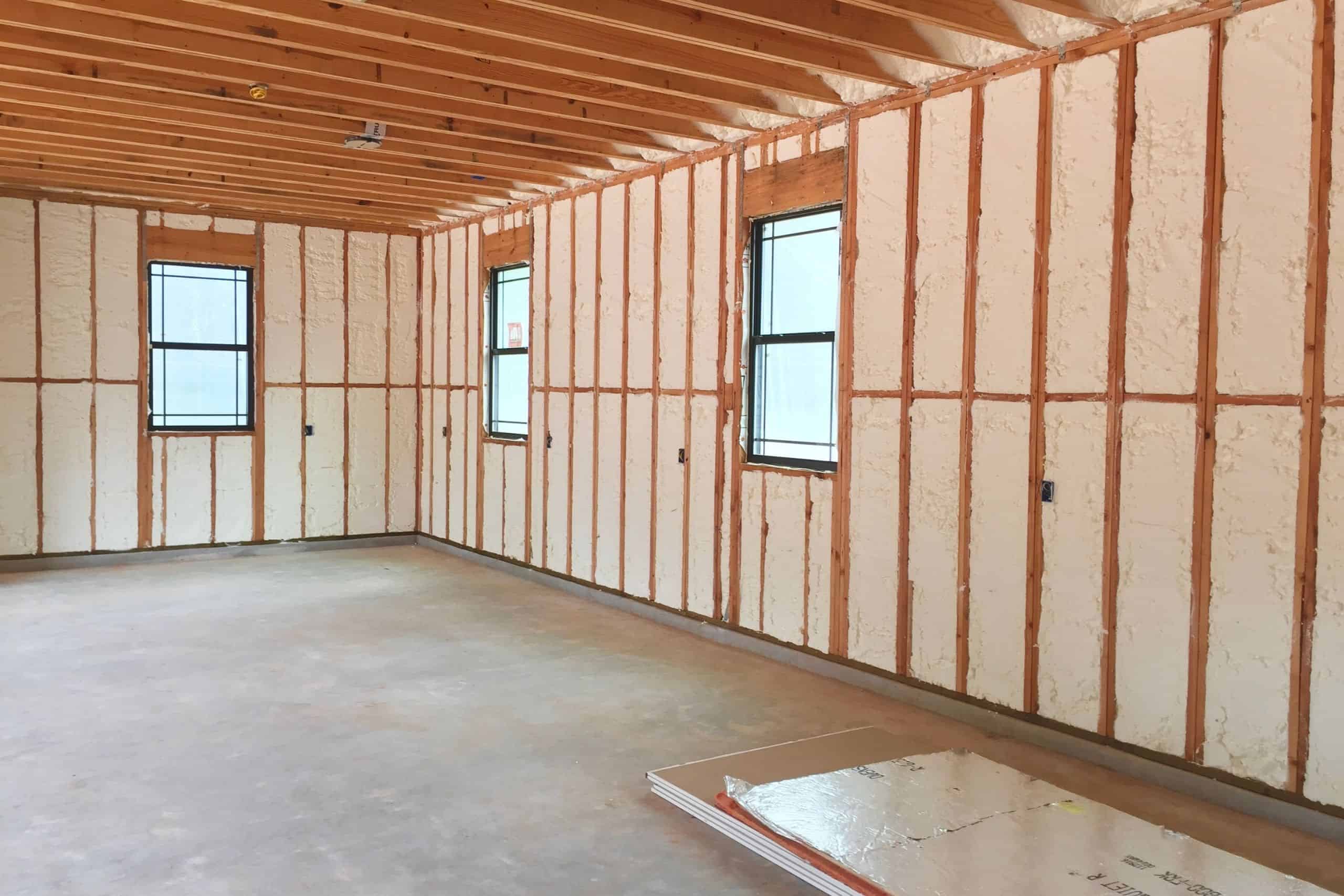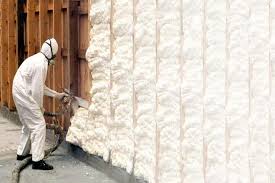Enhancing your home’s energy efficiency and comfort is a crucial investment for homeowners. As you navigate the multitude of insulation options available, determining the best fit for your walls can be a challenging task. Enter spray foam insulation – a game-changing solution that establishes a seamless, protective barrier, offering significant advantages over traditional insulation methods.
In this blog post, we’ll delve into the practical aspects of spray foam insulation, focusing on its unique benefits in comparison to other insulation types. Cincinnati RetroFoam emerges as a standout provider, specializing in both spray foam and injection foam services. The aim is to provide you with essential insights, guiding you towards an informed decision on the most suitable insulation method tailored to the specific needs of your home. Armed with this knowledge, you’ll not only improve energy savings but also enhance the comfort of your living space.
Overview of Spray Foam Insulation
Spray foam insulation stands miles apart from traditional insulation methods. This groundbreaking solution forms a protective barrier that is seamless, versatile, and loaded with advantages that enhance energy efficiency and comfort within your home.
But what exactly sets this innovative insulation apart? There are two main types of spray foam to consider: open-cell and closed-cell. While both share fundamental traits, their densities differ considerably—an important distinction when determining suitability. Grasping key differences equips you to make the ideal choice for your home’s specific needs.
Fortunately, Cincinnati RetroFoam specializes in both spray foam varieties. Our expertise ensures tailored recommendations resulting in optimal protection and energy savings. Delve deeper as we explore what defines spray foam insulation and the myriad benefits it brings.
What is Spray Foam Insulation?
Spray foam insulation consists of liquid chemical compounds that expand and solidify upon application, forming a protective barrier that is seamless, versatile, and loaded with advantages that enhance energy efficiency and comfort within your home. But what exactly makes this innovative insulation stand miles apart?
There are two main spray foam types: open-cell and closed-cell. Open-cell spray foam features a low density, allowing water vapor and moisture to pass through freely. This variety excels at insulation but permits some airflow. Closed-cell foam has a higher density, restricting moisture and dramatically minimizing airflow. This type rates exceptionally as an insulation and vapor barrier.
The choice depends on climate, the age of your home, and whether moisture management is a priority. For instance, closed-cell foam works well for inhibiting mold growth in humid environments, while open-cell foam provides superb insulation for dry climates. Fortunately, Cincinnati RetroFoam specializes in both types with optimal solutions tailored to your home’s needs.
Benefits of Spray Foam Insulation
Spray foam insulation is loaded with advantages that leave traditional insulation methods lacking. By forming an impenetrable barrier that seals out moisture and restricts airflow, it enhances energy efficiency dramatically, reducing consumption and lowering utility bills. What’s more, spray foam deters costly issues down the road.
Let’s dive into the immense benefits that set spray foam insulation apart:
- Enhanced Energy Efficiency – The airtight, seamless seal created by spray foam minimizes air leakage far better than typical insulation. This equates to a robust barrier that prevents cooled or heated air from escaping, slashing energy costs by up to 50 percent.
- Moisture Protection – Spray foam insulation deters moisture ingress, protecting your home against expensive issues like mold, mildew, and structural damage. Closed-cell foam options especially excel at moisture resistance.
- Noise Reduction – The dense, impenetrable seal also dampens exterior noise by up to 80 percent. Enjoy peace and quiet within your living spaces.
- Temperature Stability – The robust thermal barrier helps regulate indoor temperatures so they remain stable and comfortable season-round.
- Added Home Value – Upgraded spray foam insulation allows homeowners to recoup costs at resale, with potential home value increasing by up to $15 for every dollar invested.
Comparing Spray Foam Insulation to Other Types
While spray foam insulation holds clear advantages, it is not necessarily ideal for every application. Cincinnati RetroFoam offers other insulation solutions that serve specific needs. Gaining perspective on the pros and cons of various options provides the insight to make the perfect choice for your home’s requirements.
Common insulation types include injection foam and blown-in fiberglass insulation.
Injection Foam Insulation
Injection foam can be pumped into walls through small holes without removing drywall. This makes injection foam, like Cincinnati RetroFoam’s RetroFoam product, an easy upgrade for existing homes.
Blown-In Fiberglass Insulation
Blown-in fiberglass insulation remains a popular choice thanks to its versatility and affordability. Tiny glass fibers trap air to resist heat flow. However, blown-in insulation settles over time, resulting in gaps that reduce efficiency. This makes it a poor choice for walls.
How Spray Foam is Installed
Installing spray foam insulation for exterior walls involves a meticulous process, especially with drywall being removed. Cincinnati RetroFoam’s expert technicians begin by carefully assessing the existing conditions of your walls. If drywall removal is part of the plan, the foam is applied to the exposed surfaces, creating a seamless and energy-efficient barrier. Spray foam insulation for existing brick walls is difficult to achieve and injection foam should be considered instead.
For homeowners opting for injection foam insulation, Cincinnati RetroFoam provides a hassle-free installation process. Since RetroFoam can be injected into existing walls without the need for extensive remodeling, it’s a convenient solution for those looking to enhance insulation without major disruptions.
Cincinnati RetroFoam for Spray Foam Insulation
When it comes to spray foam insulation, Cincinnati RetroFoam stands out as a trusted provider committed to excellence. Our award-winning service, recognized by RetroFoam, ensures that you receive the highest quality insulation tailored to your home’s unique requirements. Unlike some competitors, our foam is mixed fresh daily in our rigs, guaranteeing top-notch performance.
In conclusion, spray foam insulation for your walls is a game-changer for homeowners aiming to improve energy efficiency and overall comfort. Cincinnati RetroFoam, with its expertise and commitment to excellence, emerges as a trusted partner in delivering top-tier spray foam insulation solutions. Whether you opt for spray foam or injection foam, Cincinnati RetroFoam has you covered, ensuring your home is well-insulated for years to come.
Frequently Asked Questions
Can I use spray foam insulation for existing exterior walls?
It depends; spray foam insulation is effective for existing exterior walls, but there’s a caveat. When applying spray foam to existing exterior walls, the drywall must be removed. If drywall removal is not part of the plan, RetroFoam, Cincinnati RetroFoam’s injection foam solution, is a more suitable option. RetroFoam can be injected into walls without the need to tear down drywall, making it a convenient choice for retrofitting insulation.
How does the installation process differ between spray foam and injection foam?
The installation process for spray foam involves removing drywall to apply the foam directly to the exposed surfaces. In contrast, injection foam, such as RetroFoam, is injected into existing walls without the need for extensive remodeling. This makes RetroFoam an excellent choice for homeowners seeking to upgrade insulation without major disruptions.
What R-value does exterior wall spray foam insulation provide?
Typical R-values range from R-5 to R-7.4 per inch. So a 3-inch application would provide around R-15 to R-22 insulation capability. Higher-density closed-cell foam provides a greater R-value.
How long does spray foam insulation last on exterior walls?
When installed correctly to manufacturer specifications, spray foam insulation lasts for the lifetime of the home with minimal degradation. It retains over 90% of the R-value even after decades.


